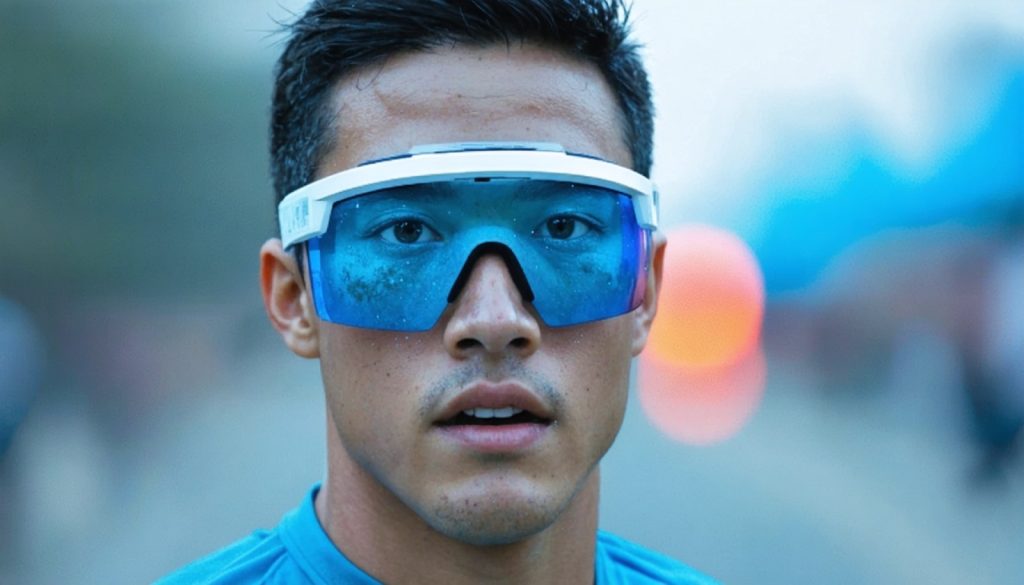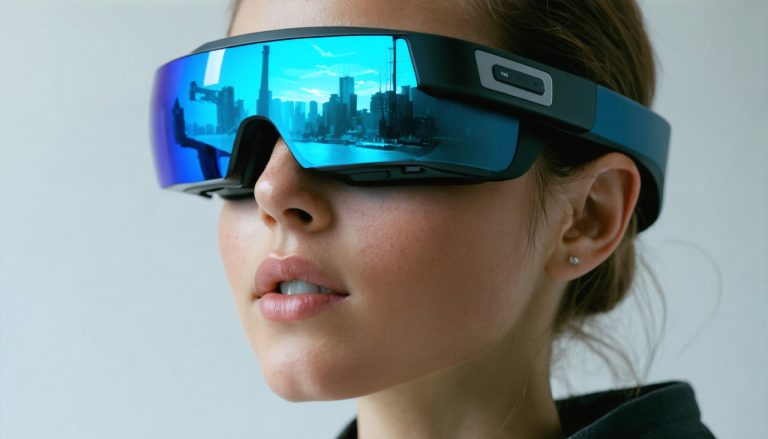
- Augmented reality (AR) glasses like the ENGO 2 overlay crucial data such as heart rate, pace, and distance, providing a heads-up display for athletes.
- These glasses aim to enhance athletic performance by allowing users to stay focused on their activity without checking separate devices.
- Current challenges include issues with weight, design, and display clarity, which highlight the room for technological innovation.
- Future iterations promise broader fields of view, enhanced gesture controls, and integration with real-time coaching systems.
- Tech companies like Meta and Google are invested in developing smart eyewear, signaling the potential ubiquity of AR glasses in fitness.
- Despite initial obstacles, smart AR glasses represent a significant step towards blending technology seamlessly with athletic pursuits.
In the early morning light, dew glistens on leaves as runners find their rhythm on winding trails. There’s a familiar ritual in this escape, syncing up with the pace of nature while monitoring the pulse of technology strapped to your wrist. Yet the horizon of fitness tech is expanding with the introduction of augmented reality (AR) glasses, potentially redefining how athletes track performance and achieve new goals.
Imagine wearing glasses that overlay your heart rate, pace, and distance in the corner of your vision—a high-tech dashboard that moves with you. The promise of such tech, like the ENGO 2 AR glasses, lies within its ability to seamlessly integrate crucial data into your natural field of view. As you focus on the trail ahead, there’s no need to glance down at a watch or lift a phone, allowing you to stay in the zone while still informed.
While the current iteration is not without its quirks—such as the tendency for glasses to slide down your nose and the occasional fuzzy readout—the pathway to innovation is rarely smooth. Today’s challenges in the weight, design, and clarity of these AR glasses highlight the quest for improvement and the strides being made. Lightweight and designed not to obstruct, they cater to the athlete’s need for both significant insights and unimpeded vision. With each iteration, the idea of AR glasses becomes less a novelty and more a potential staple of athletic gear.
Looking beyond the present, tech giants like Meta and Google are eyeing this domain, suggesting a future where smart eyewear is as commonplace as Bluetooth earbuds. Envisioned with broader fields of view and enhanced gesture controls, these devices promise not only to display health metrics but also to offer hands-free navigation and real-time coaching, adapting mid-run to your body’s signals.
Despite their current teething problems, the prospect of smart AR glasses for fitness remains exciting. They embody a future where technology synchronizes more deeply with daily life—a union of form and function, promising to revolutionize how we interpret our physical efforts. As the line blurs between humans and tech, the question stands: Are we on the brink of a new era in fitness, where augmented reality becomes an invisible coach, always there but never in the way?
The journey may be long, with each step bringing us closer to a perfect blend of technology and athleticism. Yet as many dedicated athletes would attest, every great run starts with a single step. With smart glasses, that step is already here, beckoning forward-thinking athletes to explore uncharted paths, both digitally and on the trail.
Are AR Glasses the Future of Fitness Tracking?
In the evolving sphere of fitness technology, augmented reality (AR) glasses offer runners and athletes a seamless solution to track performance metrics. Enhanced by emerging technology, these glasses, such as the ENGO 2 AR glasses, overlay real-time data directly within the user’s field of vision. This innovation holds the promise of revolutionizing the way athletes monitor and achieve their goals. Here’s a deep dive into the potential of AR glasses in fitness and beyond.
Features and Specifications
ENGO 2 AR glasses present a sophisticated array of features:
– Real-Time Data Display: Displays critical metrics like heart rate, pace, and distance in the user’s natural field of view.
– Gesture Controls: Allow for hands-free navigation and interaction.
– Lightweight Design: Ensures minimal obstruction and comfort during physical activity.
– Long Battery Life: Designed for extended use, supporting long-duration activities.
Emerging Market Trends
As companies like Meta and Google enter the smart eyewear market, the future looks promising:
– Broader Fields of View: Innovations aim at an improved display range for a more immersive experience.
– Enhanced Gesture Controls: Future designs are likely to include more intuitive control features.
– Integration with Fitness Ecosystems: Expect seamless sync with existing fitness apps and wearables to provide a holistic fitness solution.
How-To Steps for Beginners
For those considering adopting AR glasses in their fitness routine:
1. Start with Basics: Learn essential features such as turning devices on/off and basic menu navigation.
2. Calibrate Your Glasses: Adjust fit and settings to ensure comfort and accuracy in data display.
3. Sync with Devices: Connect your AR glasses with smartphones or fitness trackers for comprehensive data analysis.
4. Utilize Custom Metrics: Tailor the data you monitor based on personal fitness goals.
Pros and Cons Overview
Pros:
– Real-time updates minimize focus shifts from physical activity.
– Potential for enhanced motivation through visible progress tracking.
– Provides a heads-up display that keeps users informed while remaining engaged with their environment.
Cons:
– Current models may face comfort issues, such as sliding or added weight.
– Fuzzy graphics in bright conditions may hinder readability.
– Early adoption comes with higher costs and potential technical quirks.
Real-World Use Cases
Athletes integrate AR glasses into their routine for various use scenarios:
– Competitive Running: Maintain pace and track performance without the need to disrupt stride.
– Cycling: Navigate trails with real-time route guidance and performance updates.
– Training Regimens: Customize workouts and receive instant feedback to optimize efforts.
Security and Sustainability
While focusing on innovation, manufacturers are also emphasizing security and sustainability:
– Data Privacy: Ensuring sensitive fitness data remains protected is a priority in development.
– Sustainable Materials: Eco-friendly designs are expected as the technology matures.
Insights and Predictions
Experts predict that AR glasses will soon become a staple in personal fitness, extending beyond niche athletic circles as:
– Prices Decrease: As competition increases, affordability is anticipated to improve.
– Technology Advances: Future iterations will address current limitations, offering clearer displays and adaptive fit technologies.
Recommendations
For those looking to invest in AR glasses, consider:
– Testing Before Purchase: Opt for trial runs to assess comfort and functionality in real-world conditions.
– Monitoring Market Developments: Stay updated on new releases and upgrades.
– Evaluating Compatibility: Ensure compatibility with existing devices and apps for seamless integration.
Explore this exciting technology further and discover how it could enhance your fitness journey. For more on emerging tech trends, visit Google and Meta.
Begin your voyage into the future of fitness technology today, and make your workouts smarter, more efficient, and undeniably cutting edge.



